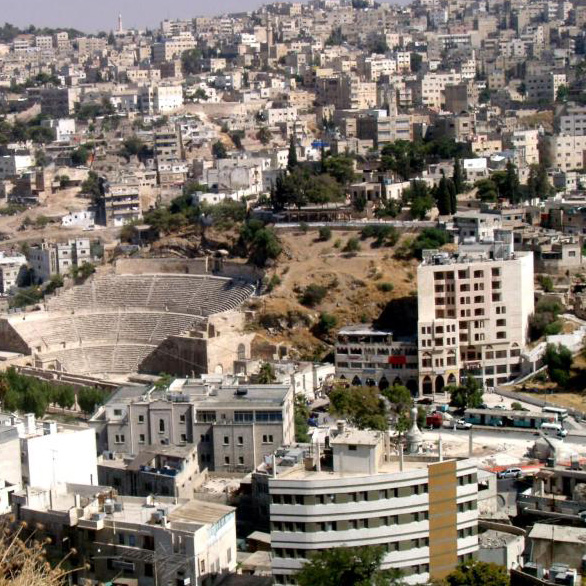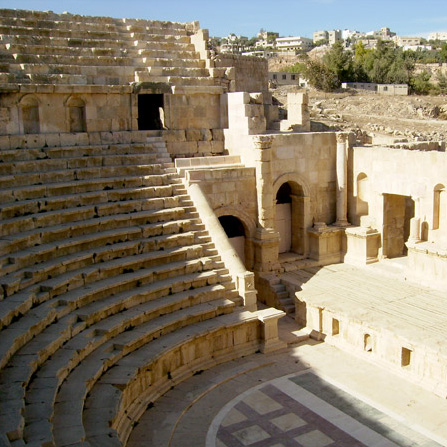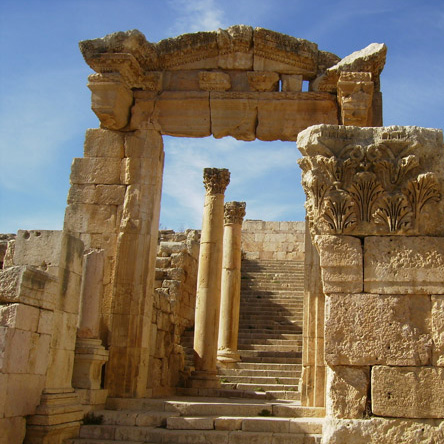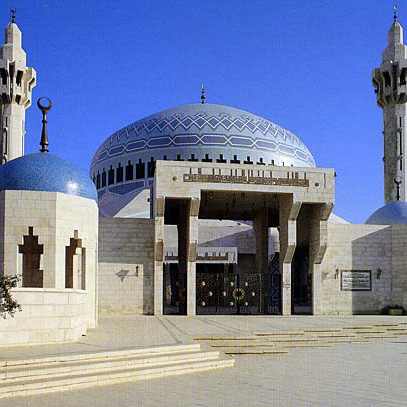Long forgotten, an urban fort reclaims its place in history
ZARQA – Down the street from the Housing Bank, two blocks away from Al Quds falafel and next to Zarqa Secondary School for Boys, lies a fort with a story to tell.
Rarely mentioned in written history, several local residents of Zarqa, 25km east of Amman, have never heard of the little-known Qasr Shabib, despite its location across the street from a hospital bearing the same name.
Unlike many forts and castles in the Kingdom, which were originally built during the Roman period or by Crusaders, Qasr Shabib is a specific example of Islamic architecture, built to protect trade and Hajj routes, not to extend imperial domination.
While there is debate to its exact date of origin, it is known that Moroccan traveller Ibn Battuta visited the 50-square-metre fort in the 14th century and wrote of it in his travelogue.
Archaeologists believe the structure was first built in the Mamluk era, between 1174AD and 1516AD, although some experts say it was rebuilt extensively in the time of the Ottomans.
A major feature of the two-storey fort was several water cisterns and open wells, some of which are still active to this day.
Its three-metre thick walls offered shelter to pilgrims looking to complete the Hajj and caravans travelling between Damascus, Jerusalem and Mecca.
Arrow slits and rooftop battlements in the one-room fort provided defence and a commanding view of the Zarqa River Basin, now dotted with the satellite dishes and residential buildings of the sprawling metropolis.
Qasr Shabib was the second in a line of the so-called Hajj forts south of Damascus, and provided weary travellers with the chance to rest before moving on to Amman, Maan and elsewhere.
Some say the fort also likely housed Druze families who migrated south at the turn of the 20th century.
The Department of Antiquities (DoA) has been working since 2004 to restore the fort, using natural stone to rebuild the roof and reinforce the walls of the structure. The department has reinforced the fort’s narrow staircase, and fortified crumbled and cracked stones and masonry, ravaged by desert winds and lack of repair over the years.
The DoA is currently putting final touches on the facade and a well at the entrance to the fort, and is preparing signage and interpretation to provide local residents a chance to come in from the urban jungle and take a glimpse into the history of their town that has turned into an urban jungle.
With a new facelift, Qasr Shabib and its cool inner chamber will once again be open to provide refuge, this time from the hustling and bustling of modern-day Zarqa.
News
23.08.2021
Meeting with King Abdullah II of Jordan
12.06.2019
Cooperation Agreement Signed in Hashemite Kingdom of Jordan
Russian-Arabic Business Council
Всех заинтересованных в установлении и развитии сотрудничества с деловыми кругами стран Арабского Востока приглашаем обратиться в Российско-Арабский Деловой Совет по адресу:
109012 г. Москва, ул.Ильинка, 5/2
тел./факс + 7 (495) 929-02-55
тел. + 7 (495) 929-03-13/15/16
эл.почта: rads@tpprf.ru
сайт: www.rusarabbc.ru








